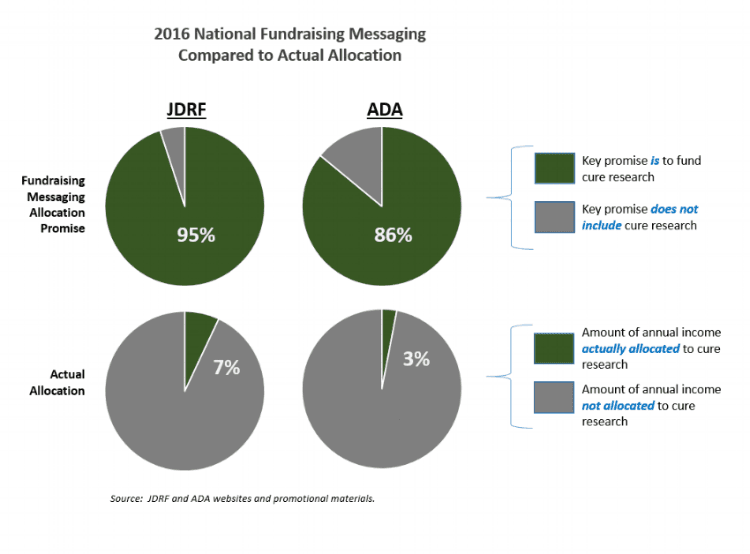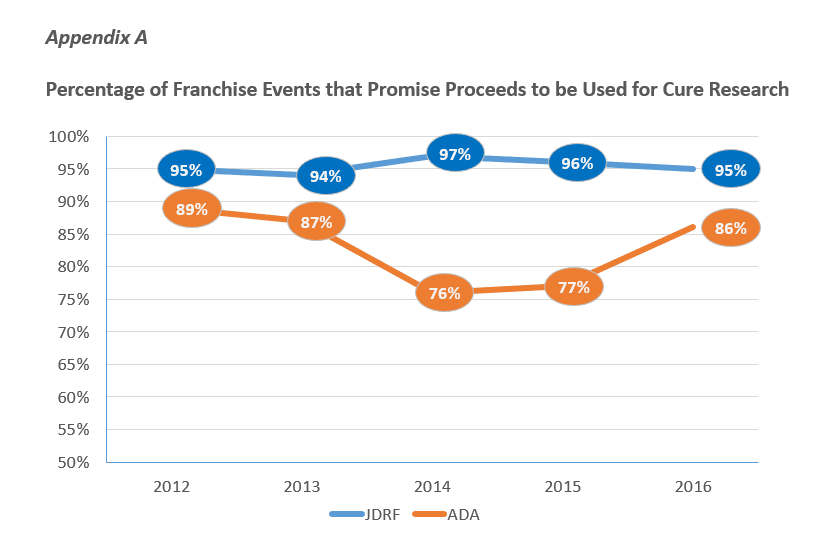
This is the fifth annual review of advertising messages used by the ADA and JDRF at national fundraising events. This year there were 382 national fundraising events, including walks, rides, and galas which generated nearly $400 million in donations. These events are a prime source of funding for both organizations, comprising 2/3 of JDRF annual income and 1/3 of ADA annual income. In conducting this analysis the JDCA individually reviewed each of the 382 events.
This report finds almost all JDRF and ADA fundraising events promise to use proceeds to find a cure, but only a small portion of the money raised is actually used for cure research. The majority of the funds are used for other activities including non-cure research, overhead, fundraising, and publications. See the opening chart.
ADDITIONAL HIGHLIGHTS:
- Supporting cure research is the principle fundraising promise: 95% of JDRF's national fundraising events and 86% of the ADA's events in 2016 feature the promise to fund cure research.
- The fundraising promise is inconsistent with actual use: Only 7% of JDRF's annual revenue and only 3% of the ADA's annual revenue was used for cure research.
- Over-use of the cure promise is at least a five-year trend. (See Appendix A).
- The ADA increases its reliance on the cure promise. After reducing the number of events featuring a cure promise in 2014 and 2015, the ADA returned to a higher rate in 2016, suggesting that donors are most responsive to a cure promise.
- Donors want their money spent on cure research. Based on ongoing quantitative tracking surveys, the majority of participants and donors at fundraising events rank cure research as their top funding priority.
SUMMARY AND COMMENTARY:
It is no surprise that both organizations rely heavily on the cure promise as the primary fundraising message. Donors are passionate that the main reason they give is to fund cure research. Yet, as written about previously by the JDCA, the amount of money that actually reaches cure research is declining.

